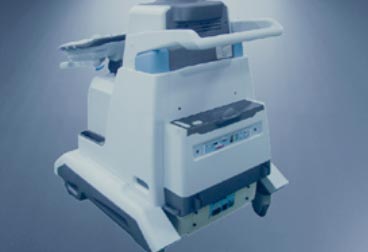When to use vacuum casting?
Views: 827 Update date: Jul 24,2024
Vacuum casting is a versatile and efficient manufacturing process, ideal for producing high-quality prototypes and small batches of parts. Here are some scenarios where vacuum casting shines:1. Prototyping
Rapid Prototyping: Vacuum casting is excellent for creating prototypes quickly. It allows for the production of parts that closely mimic the final product in terms of material properties and surface finish.Design Validation: Before committing to expensive tooling for mass production, vacuum casting can be used to validate design concepts and make necessary adjustments.
2. Low-Volume Production
Cost-Effective: For small batch production (typically up to 100 units), vacuum casting is more cost-effective compared to injection molding, which requires expensive molds.Short Lead Times: Vacuum casting offers shorter lead times compared to other manufacturing processes, making it ideal for projects with tight deadlines.
3. Material Versatility
Variety of Materials: It supports a wide range of polyurethane resins, which can simulate different plastics and rubber-like materials, offering flexibility in terms of hardness, color, and mechanical properties.Custom Properties: Materials used in vacuum casting can be tailored to achieve specific properties such as transparency, flexibility, and heat resistance.
4. High-Quality Surface Finish
Detail and Precision: Vacuum casting produces parts with fine details and smooth surface finishes, reducing the need for post-processing.Aesthetic Prototypes: Ideal for creating visually appealing prototypes for marketing, presentations, or functional testing.
5. Complex Geometries
Intricate Designs: Vacuum casting can reproduce complex geometries and intricate designs that might be challenging with other methods.Undercuts and Internal Cavities: The process can handle undercuts and internal cavities effectively, thanks to the flexible silicone molds used.
6. Functional Testing
Performance Evaluation: Vacuum cast parts can be used for functional testing to evaluate performance under real-world conditions.Fit and Assembly Testing: Useful for checking the fit and assembly of parts in the early stages of product development.
Key Benefits of Vacuum Casting
Efficiency: Quick turnaround times from mold creation to finished parts.Flexibility: Ability to produce parts in various materials and colors.
Accuracy: High precision in replicating detailed features and fine textures.
Cost Savings: Lower costs for small production runs compared to other manufacturing processes.
Conclusion
Vacuum casting is a go-to method for rapid prototyping, low-volume production, and creating parts with high-quality finishes and complex geometries. It offers a combination of speed, versatility, and cost-effectiveness, making it an indispensable tool in the product development process.
By leveraging the benefits of vacuum casting, manufacturers can accelerate the development cycle, validate designs effectively, and produce parts that meet stringent quality standards.




